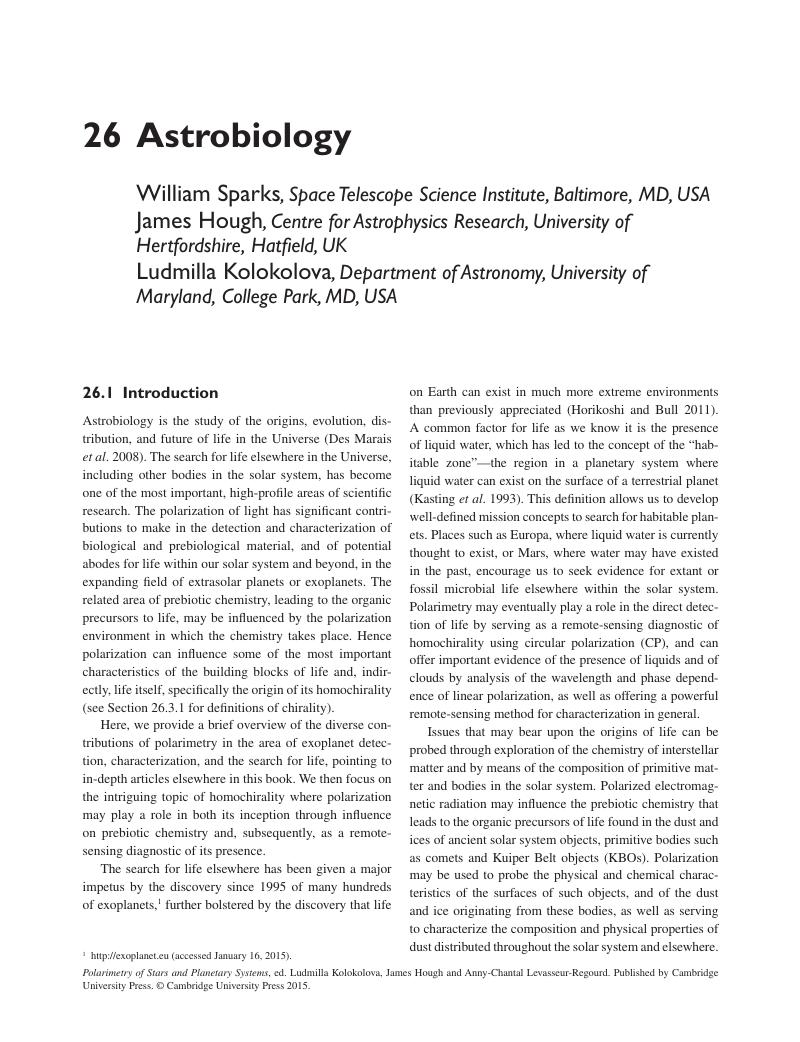26 - Astrobiology
from V - Exoplanets and exobiology
Published online by Cambridge University Press: 05 May 2015
Summary

- Type
- Chapter
- Information
- Polarimetry of Stars and Planetary Systems , pp. 462 - 478Publisher: Cambridge University PressPrint publication year: 2015
References
- 1
- Cited by



